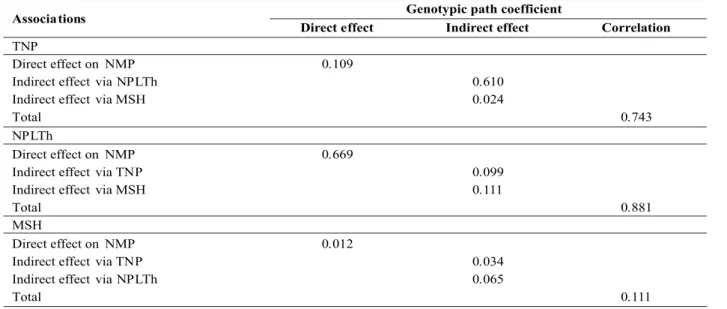Correlations and path analysis of peanut traits associated with the peg.
Texto
Imagem


Documentos relacionados
For analysis of reproduction-related traits, the following were evaluated: doe weight at first service and at weaning; total feed intake and within each cycle by does; number and
Based on the results of the analysis of variance and correlation, and considering the traits of greater interest to breeding, six variables were selected for
Abstract – The objective of this work was to estimate the stability and adaptability of pod and seed yield in runner peanut genotypes based on the nonlinear regression and
Therefore, it was concluded that the traits total number of fruit, yield, flesh firmness and soluble solids were controlled by additive and non-additive effects, while the traits
The interpretation of the results of path analysis was performed as described by Vencovsky and Barriga (1992). The following effects on path analysis were analyzed: a) Direct
The results showed: i) a strong association of trait GMY with DMY, allowing indirect selection for this trait, ii) the traits number and width of cladodes have a direct effect on
the character pairs; days to flowering (DF) x days to ma - turity (DM); days to maturity (DM) x pod weight (PW); days to maturity (DM) x number of beans per pod (NBP); pod weight
Positive effects of irrigation were observed for number of grains per spike, number of days to anthesis and plant height, while a negative effect was present for grain yield, number